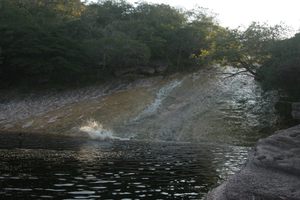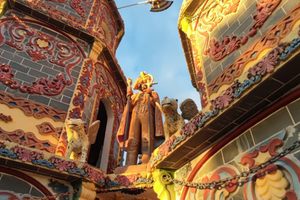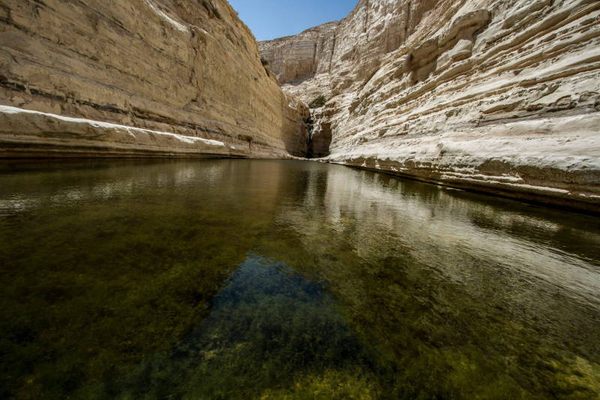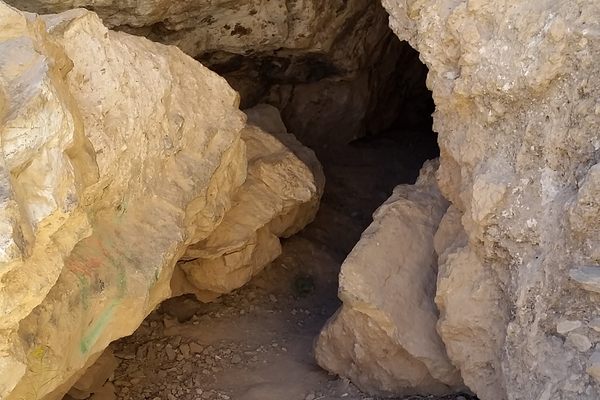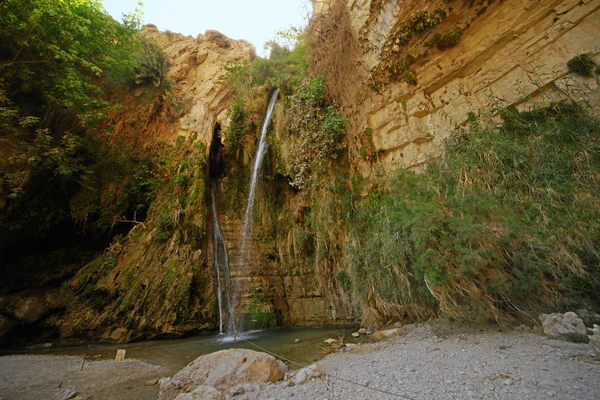About
The Chapada Diamantina (Diamond Highlands), in the state of Bahia, is more than 250 miles from Salvador. It may not be near the ocean, but there is water everywhere, thanks to its altitude. Deep, green canyons winds between spectacular rock formations. Just east of the national park, in the drier and desolate Nova Redenção, there’s magic hidden underground.
Discovered in 1920 during a quest for diamonds in the region, the Poço Azul or Gruta Azul (also known as the "Blue Pool," “Blue Pit,” or “Blue Well”) is the largest submerged paleontological site in Brazil. In 2005, fossils of various animals were found at more than 500 feet deep. Fourteen different species were identified, notably a near-complete skeleton of a 20-foot-long ground sloth that lived in all the Americas until about 11,000 years ago.
To get there, you descend hundreds of feet down wooden stairs. Between winter and autumn, due to the position of the sun, natural light penetrates the cave. Passing through the white rocks, bright rays color the water below a spectacular turquoise blue. Deep in the still, clear, mineral-laden water, one can clearly see rocks and tree trunks at the bottom.
Don’t confuse the Blue Pool with the nearby larger and deeper Poço Encantado (Enchanted Pool), as it looks very similar. The major difference is that since the 1990s, visitors aren’t allowed to swim in that one anymore. That’s because, unlike in the Blue Pool which has flowing water, the Poço Encantado’s water is still and might be polluted by swimmers, damaging its natural beauty.
Related Tags
Know Before You Go
Locating the cave can be a little complicated, so many tourists choose to hire a guide or take an organized trip from Lençois. There’s a restaurant at the site and the ability to rent a lifejacket, mask, and snorkel. Visitors must take a quick shower to protect the cave against body fats being introduced to the well. During high season, between February and October, visitors might have to wait in long lines. The best time to see the sunlight is between 12:30 p.m. and 2:00 p.m.
The fee is R$30.00 per person, including rent of lifejacket, mask, and snorkel.
Community Contributors
Added By
Published
June 22, 2020
























